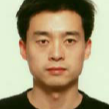International Journal of Information Engineering and Electronic Business (IJIEEB)
IJIEEB Vol. 3, No. 3, 8 Jun. 2011
Cover page and Table of Contents: PDF (size: 836KB)
Author(s)
Index Terms
Ridges, valleys, valley-ridge extraction, MLS surface fitting, feature curves
Abstract
We present an effective algorithm for detecting feature curves on point sets. Based on the local surface fitting method, our algorithm first compute the curvatures and principal directions of each point of point sets. The algorithm then extracts potential feature points according to the biggist principal curvature of the point, and evaluates the principal directions of the detected points. By projecting the points onto the principal axes of their neighborhoods, the potential feature points are smoothed. Using the principal directions with each optimized point, feature curves are generated by polyline growing along the principal directions of feature points. The results indicate that our algorithm is sensitive to both sharp and smooth feature curves of point set, and it supports multi-resolution extraction of features.
Cite This Paper
X. F. Pang, M. Y. Pang, Z. Song, "Extracting Feature Curves on Point Sets", International Journal of Information Engineering and Electronic Business(IJIEEB), vol.3, no.3, pp.1-7, 2011. DOI:10.5815/ijieeb.2011.03.01
Reference
[1]K. Demarsin, D. Vanderstraeten, T. Volodine, D. Roose, “Detection of closed sharp feature lines in point clouds for reverse engineering applications”, Report TW 458, Department of Computer Science, K.U. Leuven, Belgium, 2006.
[2]K. Hormann, “Theory and Applications of Parameterizing Triangulations”, PhD thesis, Department of Computer Science, University of Erlangen, 2001.
[3]M. Pauly, R Keiser, M.Gross, “Multi-scale feature extraction on point-sampled surfaces”, In: Proceeding of Eurographics. ETH Zurich, Sweden, Blackwell, vol. 22, no. 3, pp. 281-290, 2003.
[4]S. Gumhold, X. Wang, R. McLeod, “Feature Extraction from Point Clouds”, In: Proceedings of the 10th international meshing roundtable. Newport Beach, California, Springer, pp. 293-305, 2001.
[5]I. J. Daniels, L. K. Ha, T. Ochotta, C. T. Silva, “Robust smooth feature extraction from point clouds”, In: Proceedings of IEEE International Conference on Shape Modeling and Applications. Lyon, France, IEEE Computer Society Press, 2007: 123-133.
[6]S. Fleishman, O. D. Cohen, C. T. Silva, “Robust moving least-squares fitting with sharp features”, In: Proceeding of ACM Transactions on Graphics, Los Angeles, USA, New York: ACM Press, vol. 24, no. 3, pp. 544-552, 2005.
[7]G. Gaël, G. Markus, “Algebraic point set surfaces”, In: ACM SIGGRAPH 2007, New York: ACM Press, pp. 23-31, 2007.
[8]T. Gatzke and C. M. Grimm, “Estimating curvature on triangular meshes”, International Journal of Shape Modeling, vol. 12, no. 1, pp.1-28, 2006.
[9]J. Goldfeather and V. Interrante, “A novel cubic-order algorithm for approximating principal direction vectors”, Transaction on Graphics, vol. 23, no. 1, pp. 45-63, 2004.
[10]H. Hoppe, T DeRose, T Duchamp, et al, “Surface reconstruction from unorganized points”, In: Proceeding of Siggraph’92. vol. 26, no. 2, pp. 71-78, 1992.
[11]I. K. Lee, “Curve reconstruction from unorganized points”, Computer Aided Geometric Design, vol. 17, no. 2, pp. 161-177, 2000.
[12]D. Levin, “The approximation power of moving least-squares”, Mathematics of computation. Vol. 67, no. 224, pp. 1517-1531, 1998.


